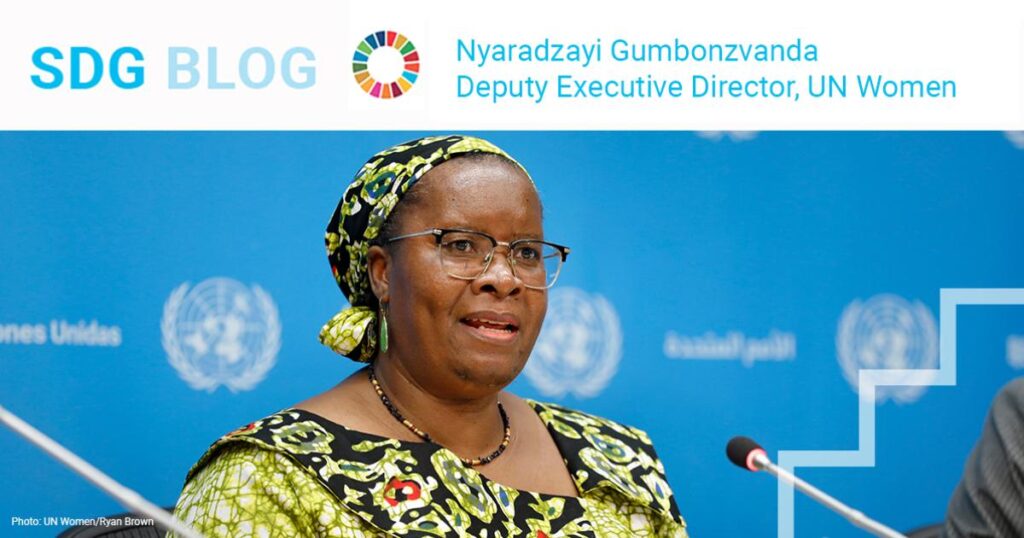By UN Women Deputy Executive Director Nyaradzayi Gumbonzvanda
In a global context where less than 30 per cent of parliamentary seats are held by women, 44 per cent of the world’s population live in countries holding presidential and parliamentary elections this year. Only two countries going to the polls in 2024, Mexico and Rwanda, have equal parliamentary representation of women and men. Harmful social norms and gender-based stereotypes perpetuate the idea that the leadership and voices of women are less worthy than those of men.
As of today, our data shows that that not a single indicator of Sustainable Development Goal 5 on gender equality and the empowerment of women and girls has been achieved, and only two out of 18 are close to being met. We are racing against time, with only six years left to close this gap.
Today, close to 120 million girls remain out of school, while the annual education skills deficit is over $10 trillion – more than the GDP of France and Japan combined. Over the next five years, low- and middle-income countries will lose $500 billion in economic activity if they don’t address the gender digital divide.
Without acceleration, a girl born today will be 39 years old before women hold as many seats in parliament as men; 68 years old before child marriage ends; and an extraordinary 137 years old before extreme poverty for women and girls is eradicated.
Last year, 612 million women and girls lived within 50 kilometers of an armed conflict, with a shocking 50 per cent increase in conflict-related sexual violence crimes, mainly perpetrated against women and girls.
Simply put, a future where the full potential of women and girls is not unleashed is a world of missed opportunities.
This year’s Gender Snapshot, prepared by UN Women and the United Nations Department of Economic and Social Affairs, is not just about aggregation of data: it must drive us to connect, discuss and advance solutions and seize opportunities.
We know that with concerted effort, gender equality is achievable. Women’s poverty is declining. Girls have made important strides in education. We see a push for positive legal reforms that promote women’s rights, with huge benefits. For example, countries that have enacted domestic violence legislation have lower rates of intimate partner violence than those without such legislation (9.5 per cent compared to 16.1 per cent).
However, the reality is also that progress is far too slow. Inequalities are increasing, poverty is rife, and the lives of women and girls are being wrecked by violence around the world.
The solutions are tried and tested—invest in women and girls, shift social norms, and the world will thrive, communities will be resilient, and households will prosper.
A package of policies that includes social protection could reduce extreme poverty for 115 million women by 2050. Closing gender gaps in farm productivity and food system wages could raise women farmers’ incomes and increase global GDP by nearly $1 trillion. Investing in the care sector and in infrastructure could create 300 million new decent low-carbon jobs. Having more women in decision-making is the way to move the needle on SDG 5.
We have a clear path ahead. The Beijing Declaration and Platform for Action, adopted in 1995 during the Fourth World Conference on Women, remains the most visionary blueprint for women and girls’ rights. As we approach its 30th anniversary in 2025, we highlight the importance of accountability to the commitments adopted by world leaders three decades ago, which must be recommitted to and resourced.
It is high time to accelerate progress and take bold action around women’s leadership, green economies, ending violence against women, peace and security, and closing the gender digital divide, among others.
Let us remember that gender equality is not just a goal but a fundamental human right and a means to a better future for all. Together, we have the power to create real, lasting change for women and girls.
* The views expressed in this blog are the author’s and do not necessarily reflect the opinion of UN DESA.

